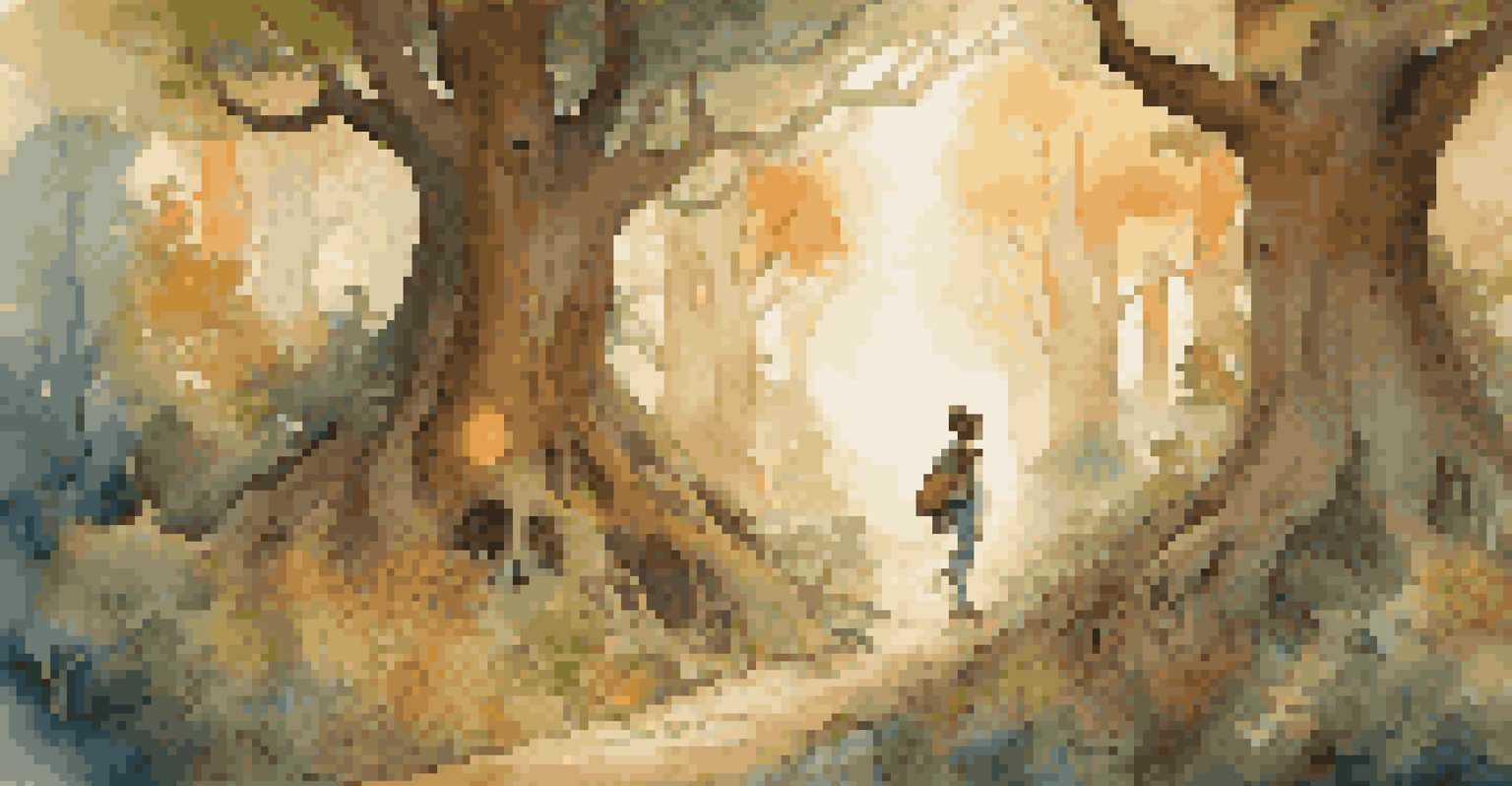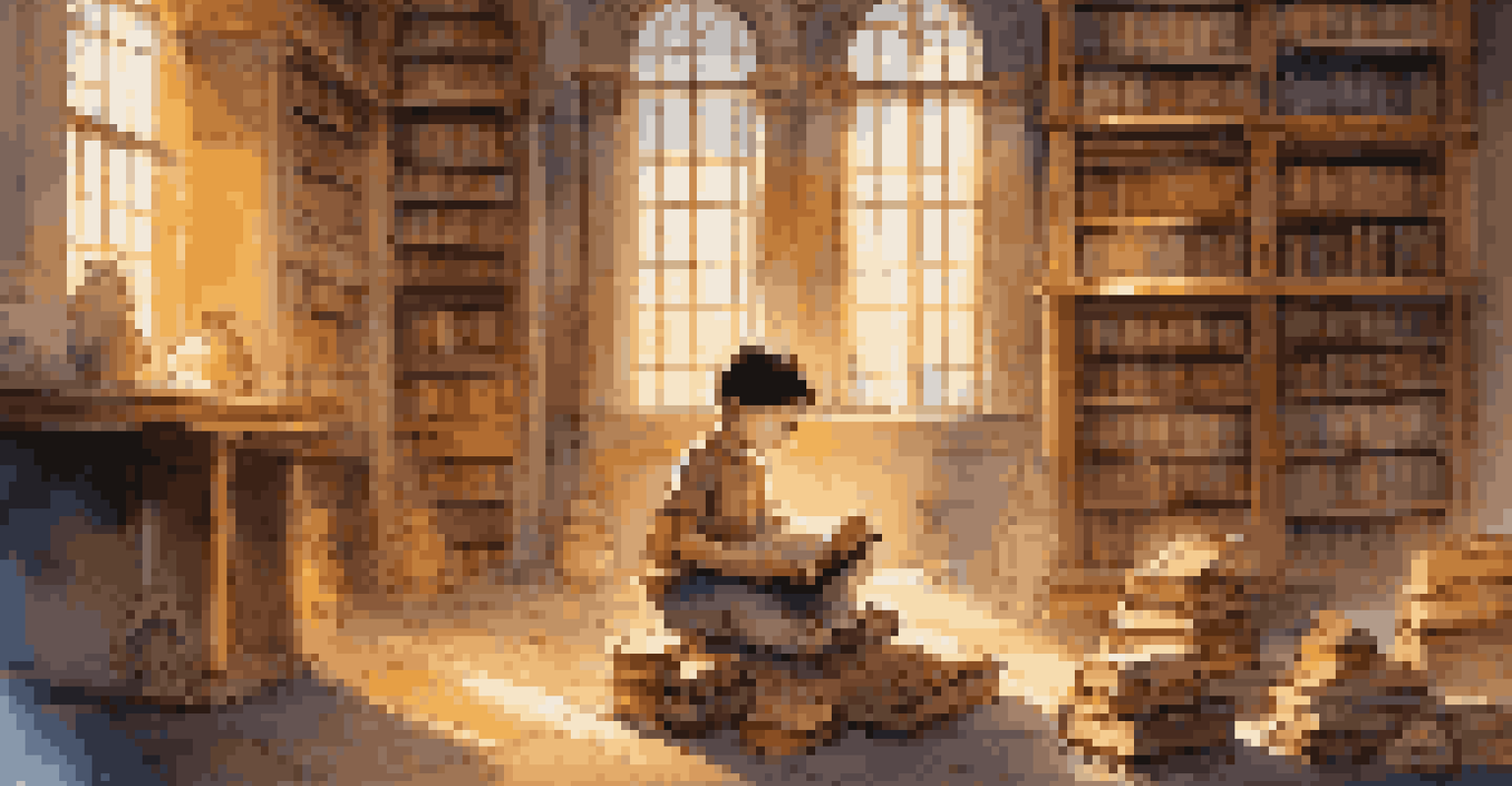The Influence of Mythology on Children's Literature and Art

Understanding Mythology: The Backbone of Stories
Mythology is more than just ancient tales; it's a rich tapestry of stories that has influenced countless narratives. At its core, mythology provides a framework for understanding complex emotions and moral dilemmas. Children, in particular, find these mythical stories relatable as they often mirror their own experiences of growth and adventure.
Myth is a way of making sense of the world and our place in it.
Consider how familiar tales like 'The Little Mermaid' draw upon various mythological themes. This story, rooted in myth, touches on ideas of sacrifice, identity, and transformation—concepts that resonate deeply with young readers. Such connections help children process their own feelings and life changes in a safe and imaginative way.
By integrating mythology into children's literature, authors create engaging narratives that spark curiosity and imagination. The fantastical elements of these stories not only entertain but also educate, allowing children to explore cultural histories and values from a young age.
Key Themes in Mythology Found in Children's Literature
Many children's books echo themes prevalent in mythology, such as heroism, adventure, and the battle between good and evil. These themes provide children with a sense of adventure and moral clarity while allowing them to explore complex narratives. For instance, stories like 'Percy Jackson and the Olympians' cleverly intertwine Greek mythology with modern-day challenges, making ancient tales accessible and exciting.

These themes resonate with children because they reflect universal experiences. Young readers often see themselves in the heroes' journey, facing challenges and learning valuable lessons along the way. This connection fosters empathy and understanding, helping them navigate their own life experiences.
Mythology Enriches Children's Stories
Mythological themes in children's literature help young readers navigate complex emotions and moral dilemmas.
Furthermore, these stories often include mythical creatures and fantastical worlds, capturing children's imaginations. By presenting these themes in a relatable context, authors can engage young readers and encourage them to think critically about the world around them.
The Role of Illustrations in Mythological Stories
Illustrations play a crucial role in bringing mythological tales to life for young readers. Vivid images of gods, goddesses, and mythical creatures capture children's attention and enhance their understanding of the story. For example, the vibrant illustrations in books like 'The Adventures of Tintin' often depict adventures inspired by various mythologies, making the stories more engaging.
Stories can conquer fear, you know. They can make the heart bigger.
Artistic interpretations of myths can also serve as a bridge between cultures. Through colorful depictions, children can appreciate the diverse mythologies from around the world, fostering a sense of global awareness and appreciation. This exposure can ignite a lifelong interest in different cultures and histories.
Additionally, illustrations can simplify complex ideas, aiding comprehension. They create visual cues that help children grasp the narrative's themes and emotions, making mythological stories more accessible and enjoyable.
Fostering Imagination Through Mythological Narratives
Mythology naturally stimulates children's imaginations by transporting them to fantastical worlds filled with extraordinary beings and epic quests. These narratives encourage children to dream big, think creatively, and envision the impossible. When children read about heroes conquering great challenges, it inspires them to tackle their own obstacles with courage and determination.
For instance, stories like 'Harry Potter' incorporate mythological elements, such as magical creatures and legendary heroes, encouraging readers to explore their own creativity. Such narratives not only entertain but also empower children to embrace their unique identities and potential.
Illustrations Enhance Understanding
Vivid illustrations in mythological tales capture children's attention and aid in their comprehension of the narratives.
Engaging with mythological stories can also spark creative activities, like drawing or storytelling. Children often feel inspired to create their own tales and illustrations, deepening their connection to the narratives and enhancing their imaginative skills.
Cultural Significance: Myths in Children's Literature
Mythology serves as a cultural touchstone, preserving stories and lessons passed down through generations. By including these ancient narratives in children's literature, authors ensure that cultural heritage remains relevant and accessible. For example, books like 'The Girl Who Drank the Moon' incorporate elements from various cultures, teaching children about diversity and the importance of storytelling.
This cultural significance fosters a sense of belonging and identity in young readers. When children recognize their own cultural myths in literature, it validates their experiences and encourages them to explore their heritage further. Such representation is crucial in building self-esteem and cultural pride.
Moreover, these stories promote understanding and respect for different cultures. By exposing children to various mythological traditions, literature can help break down barriers and encourage dialogue among diverse communities.
Lessons from Mythology: Morals and Values in Stories
Many mythological stories carry inherent moral lessons that are vital for children's development. These tales often illustrate the importance of values such as bravery, kindness, and resilience. For example, the story of 'Hercules' teaches children about the power of perseverance and the importance of overcoming challenges, instilling a sense of determination in young minds.
By learning from these narratives, children can develop a strong moral compass. They can relate to the characters' struggles and triumphs, allowing them to reflect on their own behavior and choices. This engagement with moral lessons fosters empathy and ethical reasoning, essential skills for navigating social interactions.
Modern Myths Reflect Today's Issues
Contemporary retellings of mythology address current societal challenges, making ancient stories relevant for today's youth.
Furthermore, these lessons can serve as conversation starters between children and adults, encouraging discussions about right and wrong. Through these dialogues, parents and educators can reinforce the values embedded in mythology, helping children internalize these important life lessons.
The Evolution of Mythology in Modern Children's Literature
As society evolves, so does the way mythology is presented in children's literature. Modern authors are reinterpreting ancient tales to address contemporary issues, making them relevant for today's young readers. Books like 'Circe' by Madeline Miller offer fresh perspectives on classic myths, encouraging critical thinking and discussion around themes like feminism and identity.
This evolution allows children to engage with mythology in a way that resonates with their own lives. By addressing modern-day challenges and societal issues, authors create stories that reflect the experiences and values of today's youth, making mythology feel more accessible and applicable.

Additionally, the incorporation of diverse voices in retellings of myths enriches the literary landscape. This inclusivity not only broadens children's understanding of mythology but also fosters a sense of belonging among all readers, highlighting the importance of representation in literature.